Fiber is a vital component of a healthy diet, yet many people don’t consume enough of it daily. From improving digestion to supporting heart health and regulating blood sugar, fiber plays an essential role in overall wellness. This guide explores the best sources of fiber, including the best sources of fiber in food, by dietary needs, age groups, and lifestyles—like keto.
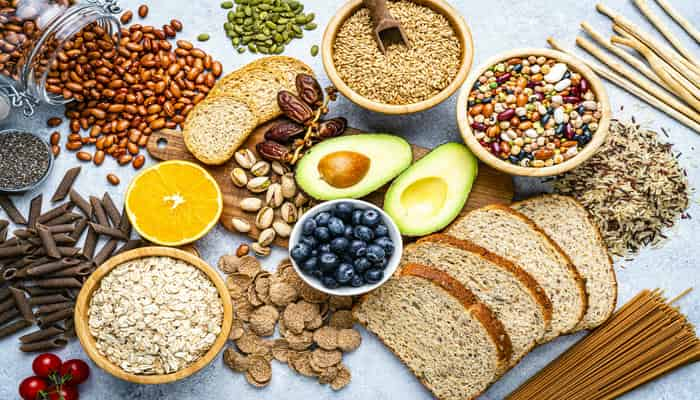
What is Fiber?
Fiber is a type of carbohydrate found in plant-based foods that your body cannot digest. Unlike sugars and starches that are broken down and absorbed, fiber passes through your digestive system mostly unchanged, but it still plays a very important role in your health.
Fiber comes from the structural parts of plants—like the skins of fruits, the bran in grains, and the cell walls of vegetables. It helps support digestion, gut health, and even heart health.
There are two main types of dietary fiber:
- Soluble fiber: This type dissolves in water and forms a gel-like substance. It can help lower cholesterol and control blood sugar. You can find it in foods like oats, apples, and beans.
- Insoluble fiber: This type does not dissolve in water. It adds bulk to your stool and helps food pass more quickly through the stomach and intestines. It’s found in whole wheat, vegetables, and nuts.
Even though your body doesn’t absorb fiber, it supports the healthy bacteria in your gut, helps prevent constipation, and lowers your risk of heart disease, diabetes, and certain cancers.
Why Fiber Is Important
Fiber plays a vital role in maintaining overall health, especially digestive and heart health. Although it isn’t digested or absorbed like other nutrients, fiber supports the body in several powerful ways:
1. Supports Healthy Digestion
Fiber adds bulk to the stool and helps it move smoothly through the digestive tract. This prevents constipation and promotes regular bowel movements. Insoluble fiber is especially effective in keeping the digestive system running efficiently.
2. Feeds Good Gut Bacteria

Some types of soluble fiber act as prebiotics—food for the healthy bacteria in your colon. These bacteria help improve digestion, immunity, and even mental health by producing beneficial compounds like short-chain fatty acids (SCFAs).
3. Controls Blood Sugar Levels
Fiber slows down how quickly sugar is absorbed into your bloodstream. This helps manage blood sugar levels, making fiber important for people with diabetes or those at risk.
4. Lowers Cholesterol
Soluble fiber binds with cholesterol in the digestive tract and helps remove it from the body. This can reduce LDL (bad cholesterol) and support heart health.
5. Helps with Weight Management
High-fiber foods are more filling and take longer to digest. This keeps you full for longer, reduces overeating, and helps control weight naturally.
6. Reduces the Risk of Chronic Diseases
A fiber-rich diet is linked to lower risk of:
- Heart disease
- Type 2 diabetes
- Certain types of cancer (especially colon cancer)
What Are the Best Sources of Fiber in Food?
Including the best sources of fiber in food is essential for maintaining a healthy digestive system, supporting heart health, and improving overall well-being. Fiber-rich foods contain both soluble and insoluble fiber, which work together to promote gut health, regulate blood sugar, and prevent constipation.
Here are the top fiber sources food categories you should consider adding to your diet:
1. Whole Grains
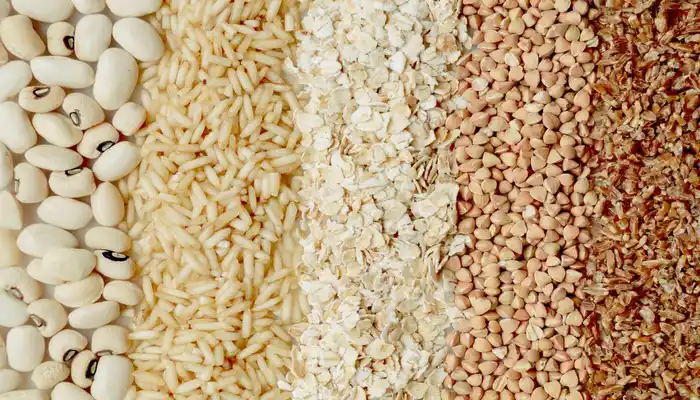
Whole grains are among the richest and most reliable fiber sources food available. Unlike refined grains, whole grains contain all parts of the grain — bran, germ, and endosperm — providing significant amounts of fiber. Examples include:
- Oats: Rich in beta-glucan, a type of soluble fiber known to lower cholesterol and improve heart health.
- Brown rice: Contains insoluble fiber that aids digestion and promotes regular bowel movements.
- Whole-wheat bread and pasta: Great sources of insoluble fiber that help add bulk to stool.
Whole grains not only provide fiber but also essential vitamins, minerals, and antioxidants, making them a cornerstone of a balanced diet.
2. Legumes
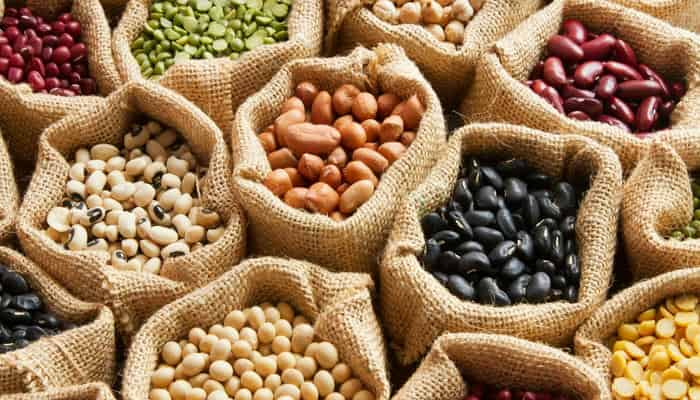
Legumes, including lentils, black beans, chickpeas, and kidney beans, are among the best sources of fiber in diet. They are particularly rich in both soluble and insoluble fiber, which helps slow digestion, stabilize blood sugar, and improve satiety. Some key benefits include:
- High protein and fiber content makes legumes excellent for weight management.
- They help improve gut microbiota by providing fermentable fiber.
- Their fiber is beneficial for reducing cholesterol and supporting heart health.
3. Fiber-Rich Fruits
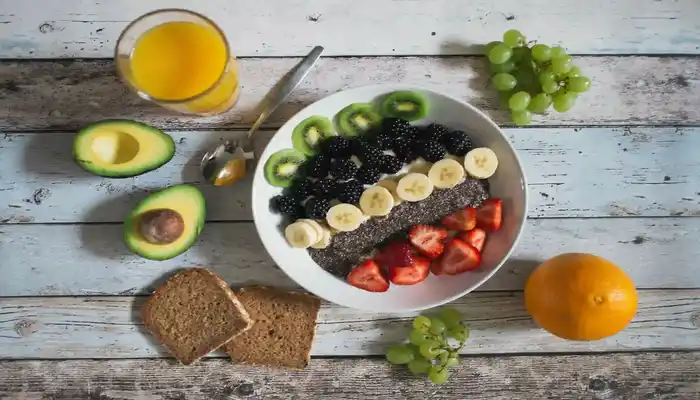
Fruits provide natural sweetness and are a great source of soluble fiber, especially when eaten with the skin. Some of the best fiber-rich fruits include:
- Apples: Contain pectin, a soluble fiber that promotes good gut bacteria.
- Bananas: A convenient source of fiber, including both soluble and insoluble types, which support digestion and energy.
- Raspberries: Exceptionally high in fiber, with around 8 grams per cup, making them one of the most fiber-dense fruits.
Other fiber-rich fruits include pears, oranges, and berries like blackberries and strawberries.
4. Vegetables
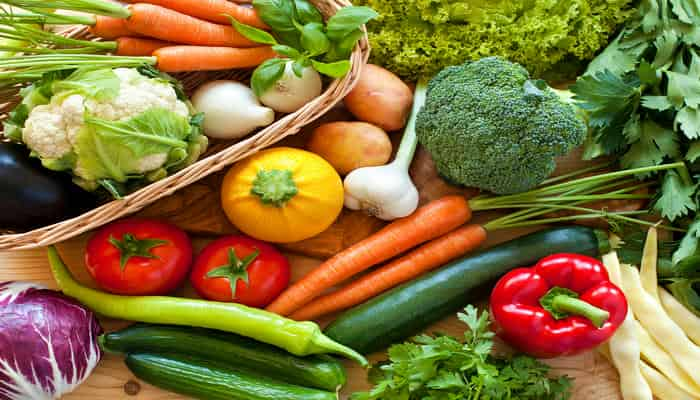
Vegetables provide a mix of both soluble and insoluble fiber, vitamins, minerals, and antioxidants. Some standout fiber sources include:
- Broccoli: Rich in insoluble fiber and also contains antioxidants that help reduce inflammation.
- Carrots: Contain soluble fiber that supports gut health and improves blood sugar control.
- Spinach: Contains both types of fiber and adds bulk to your diet while being low in calories.
Eating a colorful variety of vegetables daily ensures a wide range of fibers and nutrients.
5. Nuts and Seeds
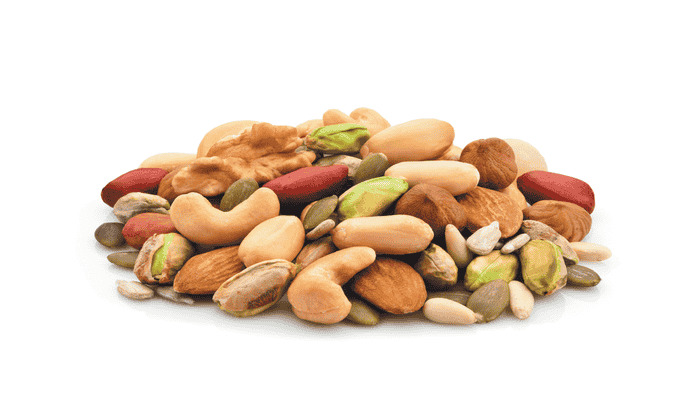
Nuts and seeds are excellent sources of fiber, healthy fats, and protein. Some top fiber sources food in this category are:
- Chia seeds: One of the highest fiber foods; just two tablespoons provide around 10 grams of fiber.
- Flaxseeds: Rich in soluble fiber and omega-3 fatty acids, supporting heart and brain health.
- Almonds: Provide a good amount of insoluble fiber, which helps digestion and weight management.
Including nuts and seeds as snacks or toppings is an easy way to increase your fiber intake.
Best Sources of Fiber for Kids
Children need fiber for proper digestion and healthy development. The best sources of fiber for kids are:
- Apples (with skin)
- Berries (especially raspberries and blackberries)
- Whole-grain cereals
- Carrot sticks
- Popcorn (unsalted and unbuttered)
To make fiber fun for children, include colorful fiber foods in their daily meals and snacks. Offering a variety of textures and flavors makes high-fiber eating more enjoyable.
Best Sources of Fiber for Constipation Relief
Constipation is often caused by a lack of dietary fiber. Effective fiber sources to relieve constipation include:
- Prunes and figs
- Bran cereal and whole-grain breads
- Lentils and split peas
- Spinach (fiber in spinach supports gut motility)
- Bananas (fiber in banana adds bulk to stool)
These foods high in fiber can significantly ease bowel movements and promote regularity. They are among the best sources of fiber for constipation and can be easily incorporated into daily meals.
Best Sources of Fiber on Keto
The keto diet limits carb intake, but fiber is still crucial for gut health. The best sources of fiber on keto include:
- Avocados
- Chia seeds
- Flaxseeds
- Spinach
- Zucchini
- Almonds
These low-carb, fiber-rich foods help you maintain ketosis while providing digestive support. They are excellent fiber sources food for those managing low-carb diets.
Fiber in Banana and Spinach
- Fiber in banana: A medium banana contains around 3 grams of fiber, making it a quick and sweet source of energy and gut support.
- Fiber in spinach: Cooked spinach offers about 4 grams per cup, adding both fiber and iron to your diet.
These are excellent additions among foods with fiber that can be added to smoothies, salads, or snacks.
Fiber Recommendations by Age
Meeting the daily recommended intake is key to gaining the health benefits of fiber. The fiber recommendations by age, according to the Dietary Guidelines for Americans, are:
- Children (1–3 years): 19g/day
- Children (4–8 years): 25g/day
- Girls (9–18 years): 26g/day
- Boys (9–13 years): 31g/day
- Boys (14–18 years): 38g/day
- Adults: 25g (women), 38g (men)
Tracking these recommendations ensures your family gets the right amount of fiber rich foods for optimal health.
Simple Daily Fiber-Rich Diet Plan
To include the best sources of fiber in diet, try this simple meal plan:
- Breakfast: Oatmeal with chia seeds and berries
- Lunch: Quinoa salad with chickpeas and spinach
- Snack: Apple with almond butter
- Dinner: Brown rice with lentils and steamed broccoli
This plan includes foods high in fiber that are nutritious, satisfying, and easy to prepare.
Final Thoughts on the Best Sources of Fiber
Adding the best sources of fiber to your meals can dramatically improve your health. From fiber-rich fruits and vegetables to whole grains and legumes, these high fiber foods are your best defense against digestive issues, heart disease, and more.
Whether you’re looking for the best sources of fiber for constipation, planning meals for children, or staying low-carb with the best sources of fiber on keto, there’s a wide range of delicious, effective options available. With consistent intake of fiber foods, you’re investing in your long-term wellness—one bite at a time.
FAQs (Frequently Asked Questions)
The best sources of fiber include a variety of fiber foods such as fruits, vegetables, whole grains, nuts, seeds, and legumes. These fiber-rich foods provide both soluble and insoluble fiber which help maintain good digestion and overall health.
The best sources of fiber in food include whole grains like oats and barley, fiber-rich fruits such as apples and berries, vegetables like spinach and carrots, and legumes like lentils and beans.
The best sources of fiber for constipation are fiber foods high in both soluble and insoluble fiber. These include prunes, flaxseeds, chia seeds, fiber-rich fruits like pears and apples, whole grains, and vegetables such as spinach.
The best sources of fiber for kids include fiber-rich fruits like bananas and berries, vegetables such as spinach and carrots, and whole grain fiber foods like oats and whole wheat bread.
The best sources of fiber in diet come from fiber foods such as legumes, fiber-rich fruits, vegetables, whole grains, nuts, and seeds. Incorporating these fiber sources food daily supports digestive health.
The best sources of fiber on keto are fiber foods low in carbs but high in fiber such as spinach, kale, broccoli, nuts, seeds, and small amounts of fiber-rich fruits like berries.
Fiber recommendations by age vary, but generally, children need about 19-25 grams of fiber daily, adults should aim for 25-30 grams, and older adults slightly less. Including a mix of fiber foods like fiber-rich fruits, vegetables, and whole grains helps meet these needs.
Fiber-rich fruits include apples, pears, raspberries, bananas, and oranges. These fruits are excellent fiber foods that provide both soluble and insoluble fiber beneficial for digestion.
Common fiber sources include fruits, vegetables, legumes, whole grains, nuts, and seeds. These fiber foods are important to include in a balanced diet for digestive and heart health.
Banana contains about 3 grams of fiber per medium-sized fruit. It is a good fiber source food providing both soluble and insoluble fiber.
Foods highest in fiber include legumes like lentils and beans, whole grains such as oats and barley, fiber-rich fruits like raspberries and pears, vegetables including spinach and broccoli, and nuts and seeds. These fiber foods help improve digestion and overall health.
To eat 30g of fiber a day, include a variety of fiber foods such as fiber-rich fruits, vegetables, whole grains, legumes, nuts, and seeds. Eating fiber foods like oats for breakfast, beans for lunch, and fiber-rich fruits like apples or bananas as snacks can help you reach 30g of fiber a day.
To get 100% daily fiber, consume fiber foods consistently throughout the day. Focus on fiber-rich fruits, vegetables, whole grains, legumes, nuts, and seeds. A balanced diet including these fiber foods will provide the necessary amount to meet your daily fiber needs.
The best fiber for hemorrhoids is soluble fiber found in fiber-rich fruits, oats, flaxseeds, and legumes. These fiber foods soften stools and reduce straining, helping to relieve hemorrhoids symptoms.
Rice, especially white rice, is not high in fiber. However, brown rice and wild rice are better fiber foods as they contain more fiber compared to white rice. Including brown rice as a fiber source food is better for digestion.
The top 10 fiber foods include lentils, black beans, split peas, oats, chia seeds, flaxseeds, broccoli, raspberries, apples, and whole wheat bread. These fiber foods are excellent sources of dietary fiber and promote good digestive health.
In piles (hemorrhoids), avoid low-fiber foods like white rice, processed foods, and excessive spicy foods. These foods lack fiber and can worsen constipation. Instead, focus on fiber foods that help ease symptoms.
Fiber rich foods include beans, lentils, whole grains, nuts, seeds, vegetables like spinach, and fiber-rich fruits such as apples and bananas.
Fiber foods are foods that provide dietary fiber including fruits, vegetables, whole grains, legumes, nuts, and seeds.
Fiber sources food include fiber-rich fruits, vegetables, legumes, whole grains, nuts, and seeds. These foods provide essential fiber for healthy digestion.
Yes, fiber in spinach is significant as cooked spinach provides about 2.2 grams of fiber per cup, making it one of the fiber-rich foods beneficial for digestion.
High fiber foods include legumes, whole grains, nuts, seeds, vegetables like broccoli and spinach, and fiber-rich fruits such as berries and apples.
Foods high in fiber include lentils, beans, oats, whole wheat, broccoli, carrots, apples, pears, and bananas. These fiber foods promote digestive health and regularity.
Foods with fiber cover a wide range including fruits, vegetables, whole grains, legumes, nuts, and seeds. Regular consumption of foods with fiber supports many aspects of health.

